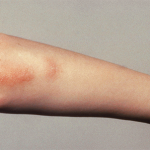SAN FRANCISCO—In a presentation on advances in the treatment of systemic lupus erythematosus (SLE) at the California Rheumatology Alliance 2016 Medical & Scientific Meeting in May, Maria Dall’Era, MD, director of the Lupus Clinic and Rheumatology Clinical Research Center at the University of California, San Francisco, discussed the range of treatments that have been identified…





